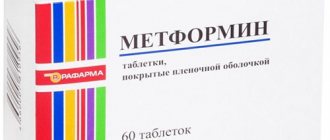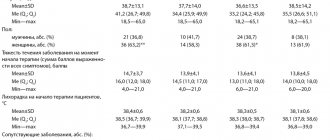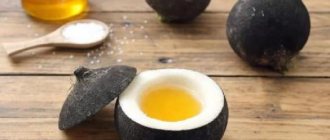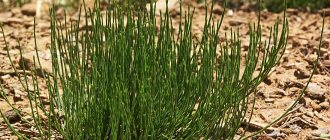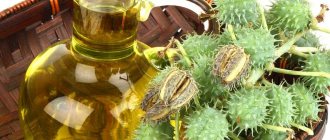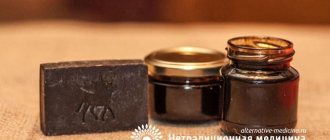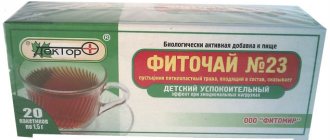Release form: Gel, 30 g in tubes.
A combination that has no analogues in Ukraine, based on methyl salicylate and rofecoxib in the form of a gel for rapid pain relief for back, joint and muscle pain.
Manufacturer: Mepro Pharmaceuticals Private Limited, India.
Registration Certificate: No.UA/9197/01/01 Order of the Ministry of Health of Ukraine No. 999 dated November 22, 2013
Go to the product website
Read the Instructions
Find it in a pharmacy
Compound:
Active ingredients: rofecoxib, linseed oil, methyl salicylate, menthol, phenoxyethanol;
100 g of gel contain rofecoxib 1 g, linseed oil 3 g, methyl salicylate 10 g, menthol 5 g, phenoxyethanol 1 g.
Excipients: propylene glycol, carbomer 934, butylated hydroxytoluene (E 321), polyethylene glycol 400, isopropyl alcohol, disodium edetate, triethanolamine, polyethoxylated castor oil, hydrogenated, purified water.
Dosage form. Gel.
Basic physical and chemical properties: white, soft, homogeneous mass with a characteristic odor, which is located in a soft tube.
Pharmacotherapeutic group. Nonsteroidal anti-inflammatory and antirheumatic drugs. Coxibs. Code ATHM01AN.
Newspaper "News of Medicine and Pharmacy" 9 (583) 2021
The article was published on p. 16-19 (World)
In his daily practice, an orthopedic traumatologist encounters two main pathological conditions that require effective, rapid and reliable treatment of pain and inflammation: injuries and diseases of the musculoskeletal system.
Injuries to the musculoskeletal system are one of the main reasons for seeking medical care in outpatient practice [28]. Injuries to the musculoskeletal system include injuries to muscles, ligaments, tendons and bone fractures. Approximately 3.7 million sports injuries occur in people of all age groups. A particularly urgent problem is the effective treatment of injuries prone to chronicity (epicondylitis, apophysitis, periarticular injuries), since they are the main cause of long-term decline in quality of life and work ability. The main focus in the treatment of injuries is usually to reduce swelling and pain [29]. For this purpose, nonsteroidal anti-inflammatory drugs (NSAIDs) have been used successfully for a long time [28]. Generally, the use of NSAIDs is associated with their anti-inflammatory and analgesic properties.
An equally large contingent of orthopedists and traumatologists are patients with degenerative-dystrophic diseases of the musculoskeletal system. Osteoarthritis (OA) is the most common form of damage to the joints and spine in industrialized countries. In the UK, it affects between 1.3 and 1.8 million people; in France, 6 million new cases are diagnosed every year; about 16% of the US population has some form of arthritis. Ukraine is no exception in this regard. The prevalence of osteoarthritis in our country is 2515.7 per 100,000, and the incidence of osteoarthritis is 497.1 per 100,000 population. The incidence among men and women of working age and retirement age also varies: in men it is 32% less (423.1) than in women (558.8), and in people of working age it is 2.7 times less (338.9 ) than among pensioners (931.1) [3]. The incidence of osteoarthritis increases sharply with age, affecting a third of the population in old and senile age [2].
OA most often affects people in older age groups, whose share in the population of developed countries is steadily growing. It is believed that after 60 years, almost every second person has OA. The economic burden of OA (medical interventions, premature death, chronic and short-term impairments) is estimated at 1–1.5% of the gross domestic product of Western countries [5]. At the same time, the patient’s quality of life is significantly reduced due to pain and, as a consequence, limited functionality.
Treatment of osteoarthritis is a difficult task for the doctor and until now remains predominantly symptomatic. The goal of treatment is to slow the progression of OA, reduce the severity of pain and inflammation, improve the patient’s quality of life, reduce the risk of exacerbation and damage to new joints, and prevent disability. A key component of OA therapy is pain relief, namely the use of NSAIDs [8]. The desired effects of all NSAIDs are pain relief and suppression of inflammation. However, when performing the above tasks, NSAIDs, by suppressing the synthesis of prostaglandins, cause a number of side effects. By blocking the synthesis of prostaglandins in the stomach, NSAIDs have an ulcerogenic effect. In the cardiovascular system, NSAIDs cause vasoconstriction. The side effect on the kidneys is a decrease in daily urine output and creatinine clearance. Therefore, the safety of anti-inflammatory and analgesic treatment comes first when managing patients with OA and other pathologies requiring the use of NSAIDs.
A modern doctor has a wide choice of modern NSAIDs, but a special place in this list is occupied by rofecoxib, a specific inhibitor of cyclooxygenase-2 (COX-2), which has the highest selectivity coefficient (IC50 COX-1/IC50 COX-2 according to Warner et al .) - 0.004, which is explained by the unique features of the stereometric structure of its molecule - the presence of a rigid side chain capable of penetrating into the hydrophilic side cavity of the COX-2 molecule and thereby non-competitively blocking the active center of this isoenzyme. For celecoxib this indicator is 0.1, nimesulide - 0.15, ibuprofen - 10, indomethacin - 33, naproxen - 100. Thus, rofecoxib inhibits prostaglandin synthesis to the least extent and, as a result, has a high safety profile [10] . Another important aspect is the fact that the selectivity of rofecoxib is practically independent of the concentration of the drug, which distinguishes it from other NSAIDs [7].
Today, Denebol is the only representative of rofecoxib on the pharmaceutical market of Ukraine
Denebol is available in tablets containing 25 and 50 mg of rofecoxib, and in the form of a 1% gel. The recommended dose for acute pain is 50 mg/day, chronic pain is 25 mg/day, depending on the severity of the pain syndrome and concomitant diseases, it can be reduced to 12.5 mg. When taken orally, Denebol is quickly absorbed from the digestive tract, and its bioavailability is over 90%. The maximum concentration in the blood plasma of the active substance of the drug Denebol, rofecoxib, is achieved 2 hours after administration. It is biotransformed mainly in the liver with the formation of 6 inactive metabolites, 70% of which are excreted by the kidneys [6].
The effectiveness and safety of the drug Denebol (tablets 25 and 50 mg) produced (Great Britain) were confirmed in the framework of a pharmacoepidemiological study, which was carried out in 9 clinical centers of Ukraine [8] with the participation of 532 patients with pain syndrome of various origins: 160 with dermatological diseases (acne and psoriatic osteoarthropathy), 126 - with otolaryngological and gynecological pathology with severe pain syndrome, 246 - with damage to joints of various origins, of which 100 people. - with high cardiovascular risk.
The study demonstrated the high analgesic and anti-inflammatory effectiveness of the drug Denebol, manifested in the regression of clinical symptoms. Only 19 patients (3.58%) had side effects. At the same time, discontinuation of the drug or adjustment of the dosage regimen was required in 0.38% of the total number of patients participating in the study. It has been proven that among the side effects of the drug Denebol, cardiovascular disorders in the form of a slight increase in blood pressure occurred in only 15.7% of patients over the age of 50 years. In patients classified as at risk due to the presence of cardiovascular disorders, its reduction can be achieved by reducing the daily dose of Denebol to 12.5 mg [7].
It should also be noted that rofecoxib, based on the results of studies conducted at the turn of the 20th and 21st centuries, has all the positive qualities put forward by the World Health Organization and necessary for its further medical use as a representative of the NSAID group:
- reduces the intensity of pain in osteoarthritis and injuries of the musculoskeletal system;
- reduces swelling of joints;
- has a chondroneutral effect;
- has a high safety profile in relation to the gastrointestinal tract (GIT);
- possibility of safe use for 6–12 months; manifestation of NSAID gastropathy as a result of taking rofecoxib for 6 months. was 0.01% per 100 patients per year (comparable to the frequency in persons not taking NSAIDs);
- possibility of safe use for 6–12 months. at a dose of 25 mg without complications from the cardiovascular system;
- does not change platelet function (therefore, the risk of bleeding is minimized);
- prolonged action - take 1 time per day.
Concerns raised about possible adverse cardiovascular effects of rofecoxib were not confirmed, and he has now been fully rehabilitated. As reported by The Associated Press “Vioxx Could Rejoin Painkillers on Market”, a specially created expert council on coxibs under the US government on February 18, 2005 decided on the advisability of their further use in clinical practice, since “the benefits outweigh the risks.” Thus, in December 2004, the FDA approved new recommendations regarding the safety of NSAIDs - rofecoxib, valdecoxib, celecoxib and naproxen:
1. Individuals with an increased risk of gastrointestinal bleeding and intolerance to non-selective NSAIDs are recommended to be prescribed selective COX-2 inhibitors.
2. The issue regarding the occurrence of cardiovascular and other complications associated with taking NSAIDs should be resolved taking into account the individual characteristics of the patient.
3. Patients should use NSAIDs and other over-the-counter medications as directed. In cases of using NSAIDs for more than 10 days, you should consult your doctor.
4. The decision to prescribe drugs is made by the doctor, justifying it based on the results of assessing the cardiovascular risk of a particular patient [1].
Rofecoxib should not be used in patients with asthma, especially that caused by acetylsalicylic acid. The drug is not used for the treatment of cancer patients and patients at increased risk from the cardiovascular system (previous heart attack, stroke, arterial hypertension (stage III), progressive clinical form of atherosclerosis).
Denebol in the treatment of musculoskeletal injuries
In studies by Jokhio et al. The analgesic effectiveness of rofecoxib and ketoprofen for ligamentous injuries was compared. 165 patients with sprains and dislocations of the joints of the upper and lower extremities were divided into two groups. The first group (n = 82 patients) received rofecoxib 25 mg per day orally, the 2nd group (n = 83) took ketoprofen 200 mg per day. The duration of therapy was 7 days. The effectiveness was assessed taking into account the speed of onset of pain relief and its severity. It was found that in the group receiving rofecoxib therapy, an analgesic effect was achieved more quickly, which persisted for 24 hours and did not require additional analgesia, in contrast to the group receiving ketoprofen (additional analgesia in 7.8% of cases) [7].
The effectiveness of rofecoxib has been demonstrated for back muscle injuries. J. Dietrich et al. (2006) studied the effectiveness and safety of rofecoxib 25 mg/day and diclofenac 150 mg/day in the treatment of 244 patients with traumatic injury to the soft tissues of the back. The evaluation criterion was the presence of severe pain (visual analogue scale (VAS) score > 50 mm). After 3 and 7 days of treatment, there was a significant reduction in pain in both groups, while the effect of the drugs did not differ significantly: –40.0 vs –42.6 mm and –58.8 vs –60.7 mm according to VAS, respectively. But while taking diclofenac, the number of complications from the gastrointestinal tract was significantly higher - 15.4%, than with rofecoxib therapy - 3.2% [7].
Denebol in the treatment of degenerative-dystrophic diseases of the musculoskeletal system
Is rofecoxib really effective in treating osteoarthritis and how safe is it?
To answer these questions, an analysis of 26 randomized controlled trials (RCTs) was conducted. They included over 20,000 patients with osteoarthritis and continued for up to 1 year. Patients in the main group took rofecoxib 12.5; 25 or 50 mg once daily. Placebo (sugar tablets), diclofenac, ibuprofen, naproxen, nimesulide, nabumetone, paracetamol, celecoxib and a combination of diclofenac and misoprostol were used as controls [17].
Based on the results obtained, it was found that rofecoxib was more effective than placebo (patient global response: risk ratio (RR) 1.75, 95% confidence interval (CI) 1.35–2.26), and at the same time much greater for the clinician Of interest are the results of comparative characteristics of the effectiveness and safety of rofecoxib and other NSAIDs used in the treatment of osteoarthritis.
Rofecoxib and diclofenac
To compare the effectiveness of rofecoxib and diclofenac, three RCTs were conducted in which some patients with OA of the knee and hip joints took rofecoxib (12.5 or 25 mg per day), and others took diclofenac 50 mg three times a day (150 mg). in a day).
After two weeks of treatment, a study by Niccoli (2002) indicated that rofecoxib and diclofenac significantly reduced pain intensity as assessed by both physicians and patients. Moreover, the decrease in pain intensity in the diclofenac group in the first 2 weeks of treatment was significantly higher. But later (12 and 52 weeks after the start of treatment), there was no statistically significant difference in effectiveness between the patient groups. However, pooled data from all three studies showed that at 1 year, fewer people taking rofecoxib were withdrawn from the study due to lack of efficacy than those who received diclofenac (RR 1.11, 95% CI 0.80– 1.54).
A two-week renal tolerability study found that both diclofenac and rofecoxib had some effect on renal function. This was expressed in a decrease in daily diuresis and creatinine clearance. However, in the diclofenac group these changes were more pronounced. It should be noted that the effects of these drugs on liver function have also been demonstrated. Thus, in patients taking diclofenac, a more pronounced increase in the levels of alanine aminotransferase and aspartate aminotransferase was observed [17]. As for gastrointestinal complications, more patients in the diclofenac group were forced to discontinue treatment due to the development of gastrointestinal side effects. In terms of cardiovascular side effects such as hypertension, palpitations and transient ischemic attack, a higher risk was again noted in the diclofenac group (increased transaminase levels - 10/230 compared with 1/232 in the rofecoxib group).
Rofecoxib and ibuprofen
Four double-blind RCTs were performed to compare the effectiveness of rofecoxib and ibuprofen in patients with osteoarthritis [20]. Patients of the first and second groups took rofecoxib at a dose of 25 and 50 mg per day, respectively, and the third group took ibuprofen 800 mg 3 times a day. The course of treatment lasted from 16 to 24 weeks. It was noted that the clinical effectiveness of rofecoxib was comparable to that of ibuprofen, and this was observed even when using a minimum dose of rofecoxib of 25 mg. Control fibrogastroscopy, which was carried out in all groups, showed a significantly lower number of erosions of the gastric mucosa in patients receiving rofecoxib.
As for comparative studies of the effectiveness and safety of rofecoxib, naproxen, nimesulide, celecoxib and the combination of diclofenac and misoprostol, with equal clinical efficacy, a more pronounced safety of rofecoxib in relation to gastrointestinal events was demonstrated compared with naproxen, nabumetone, paracetamol and the combination of diclofenac and misoprostol [19, 24].
Denebol in the prevention of heterotopic ossification after hip replacement
Heterotopic ossification (HO) is the phenomenon of formation of fully differentiated bone tissue in ectopic locations where bone is normally absent. This does not happen with any other specialized tissue. The bone tissue resulting from HO resembles normal lamellar bone. The pathophysiology of HO is not well understood. After total hip arthroplasty, the surrounding tissue is at risk of developing HO, which is likely due to the presence of osteogenesis cells in the wound bed. Local trauma likely triggers the inductive signaling pathway. Whether the development of HO in body tissues begins or not depends on the delicate balance between the local and systemic activity of osteogenic and osteoinhibitory factors [14]. The incidence of HO after total hip arthroplasty varies, according to various authors, from 10 to 90%, although the rate of clinically significant incidence is considered much lower, between 3 and 7% [9]. HO is more often observed after primary total hip arthroplasty. As a rule, the development of this complication is associated with the degree of tissue trauma during surgery, the presence of previous operations on the hip, and epidural anesthesia. It has been proven that heterotopic ossification more often develops after an anterolateral approach compared to a posterior one, as well as after a transtrochanteric approach compared to a lateral or posterolateral one [12, 23]. Men suffer more often. HO is also more common in individuals with ankylosing spondylitis, hypertrophic osteoarthritis, Forestier disease, and in patients with large body weight. Data on the effect of the type of endoprosthesis (cemented/cementless) on the incidence of HO development are very contradictory. Pulsatile lavage also does not affect the frequency of HO. The main problem in a patient with HO after endoprosthetics is a decrease in the range of motion in the prosthetic joint and, less often, the occurrence of pain. Active formation of ossification can occur within three months after surgery, and its complete maturation takes up to one year [13].
To prevent HO, minimal doses of radiation therapy [11] or non-steroidal anti-inflammatory drugs [18] are used. The preventive effect of NSAIDs in HO was first noted by Dahl [16], who used indomethacin for pain relief in the postoperative period. Other studies have also demonstrated the ability of indomethacin to prevent the development of HO. However, to obtain a positive result, it took a rather long period of use of this drug (up to 6 weeks), which resulted in a significant increase in the frequency of side effects even with a minimum period (1 week) of indomethacin administration, which, of course, represents a serious clinical problem. Attempts to reduce the use of indomethacin to 3–4 days were unsuccessful in preventing the development of HO. Given such a high risk of complications when using non-selective NSAIDs, the views of scientists and clinicians were turned to selective agents - COX-2 inhibitors. Only the effectiveness of these drugs in preventing HO remained unclear. In 2007, a prospective two-stage study was performed to determine the effectiveness of rofecoxib as a COX-2 inhibitor in the prevention of HO [21]. It included 42 patients with osteoarthritis who underwent total hip replacement. Rofecoxib was administered orally at a dose of 50 mg per day for 6 days. The patient took the first dose of rofecoxib the evening before surgery. Patients were not allowed to use other NSAIDs for the first two months after surgery. In the postoperative period, if rofecoxib was insufficiently effective as an analgesic, the use of tramadol or other drugs was allowed. Gastrointestinal disturbances were monitored daily until 7 days after surgery.
A posterolateral approach without trochanteric osteotomy was used in all patients. At 6 months postoperatively, heterotopic bone formation was assessed on radiographs using the Brooker classification. For comparison, we used the results of a study conducted by the same authors in 1999 with the participation of 2 groups of patients: those who received indomethacin for 7 days (99 people) and those who did not take NSAIDs in the postoperative period (170 people) [22].
The results of the study showed that in the rofecoxib group, only 19% of patients had minimal signs of ossification (Brooker grade 1), which is less than in the indomethacin group (24%) and disproportionately less than in patients who did not receive prophylactic treatment , in whom HO of 2, 3 and 4 degrees of intensity was observed (Table 1).
Thus, rofecoxib appears to be a promising means of preventing heterotopic ossification after primary total hip arthroplasty, which also has a much higher level of safety compared to non-selective NSAIDs.
Denebol for analgesia in the postoperative period
The analgesic effect of rofecoxib was assessed before or after surgery in patients undergoing arthroscopic knee surgery. In a clinical study, Denebol was found to provide effective analgesia in patients after arthroscopic meniscectomy. In addition, the administration of 50 mg of rofecoxib before surgery provides a longer duration of postoperative pain relief compared with the use of the drug after surgery [26]. For interventions on other segments, including large joints and long bones, rofecoxib 50 mg (2 to 4 times daily) was effective in relieving acute postoperative pain in adults [7].
Local prescription of NSAIDs
Local use of NSAIDs has a number of advantages, one of which is the ability to create a high concentration of the drug in the area of inflammation, at the same time without systemic side effects. A sufficiently high concentration of the drug is necessary to penetrate the skin, muscles and synovial fluid. In addition to this, the gel form of the drugs allows for a constant and slow release of the drug [25]. In this regard, recently more and more attention has been paid to the local use of NSAIDs for the treatment of patients with acute and chronic inflammatory joint syndrome.
Denebol gel is a combined preparation for external use based on methyl salicylate and rofecoxib, which has no analogues in Ukraine
The composition of the drug Denebol gel includes rofecoxib (1.0 g), methyl salicylate (10.0 g), menthol (5.0 g) and flaxseed oil (3.0 g). This combination provides potentiation of the effect of the components and multi-stage action of the drug. At the first stage, immediately after application, menthol, stimulating the cold receptors of the skin and superficial nerve endings, has an instant distracting and analgesic effect. Alcohols, evaporating from the surface of the skin, additionally provide cooling and analgesia. This is followed by a locally irritating, analgesic and anti-inflammatory effect of methyl salicylate. Finally, the specific COX-2 inhibitor rofecoxib begins to act. The gel base ensures its sufficient bioavailability. At the same time, rofecoxib not only relieves pain, but also permanently eliminates its cause - inflammation. The next component, flaxseed oil, ensures slow absorption and prolonged action of methyl salicylate and rofecoxib, while it itself has antioxidant properties (since hypoxia is formed at the site of inflammation and the associated activation of lipid peroxidation) [4]. α-linoleic acid, which is part of flaxseed oil, facilitates the transport of gel components through the epidermal layer and basement membrane of the skin, softens it. This is especially important for people in the older age group. The effectiveness and good tolerability of the active substance of the drug rofecoxib are evidenced by the results of a number of large randomized clinical trials conducted in patients with osteoarthritis, rheumatoid arthritis and pain in the lower back [5].
To achieve faster clinical results, tablet and gel forms of the drug Denebol are combined, which allows patients to individually select a treatment regimen and reduce the dose of systemic NSAIDs depending on the severity of the pain syndrome. The recommended initial daily dose of Denebol (rofecoxib) tablets is 12.5 mg and can be increased to 25 mg. The maximum recommended daily dose is 50 mg. For effective pain relief, the gel is recommended to be used 3 times a day. The indisputable advantage of Denebol gel is the fact that applying even a large amount of gel to the skin does not lead to an increase in the concentration of rofecoxib in the blood plasma, which significantly increases the safety of its use in combination with tablet forms of the drug.
In the absence of contraindications, Denebol gel can be used to enhance the effect of physiotherapeutic procedures (ultrasound examination, electrophoresis, phonophoresis, etc.).
The combination of local and systemic use of the drug Denebol allows for rapid relief of pain, significantly improving the patient's mobility and preventing chronicity of the process due to the effective suppression of inflammation both at the systemic and local level. Such a potentiating effect is not possible when using only the oral or only the local form of the drug. In addition, this combination of forms of the drug Denebol allows you to reduce the dose of the oral form and the duration of treatment without compromising the clinical effect, which can significantly reduce the risk of the above side effects. When using drugs in this group, especially if a long course of treatment is necessary, you should be aware of contraindications and the possibility of developing undesirable side effects. Contraindications for prescribing Denebol gel: hypersensitivity to rofecoxib and other NSAIDs, third trimester of pregnancy and breastfeeding.
Thus, Denebol (rofecoxib) is an effective and safe drug for the treatment of pain and inflammation in injuries, diseases, as well as after surgical interventions on different segments of the musculoskeletal system. The combination of oral and local (gel) forms of the drug Denebol allows you to potentiate the anti-inflammatory and analgesic effect, as well as reduce the dose of the oral drug, reducing the risk of complications. High clinical effectiveness along with an affordable price make it possible to recommend Denebol for the treatment of a wide range of patients with injuries and diseases of the musculoskeletal system.
Pharmacological properties.
Pharmacodynamics.
Denebol gel contains rofecoxib, a non-steroidal anti-inflammatory drug, a highly selective cyclooxygenase-2 inhibitor. It has analgesic, antipyretic, and anti-inflammatory effects when applied topically. COX-2 is activated in response to the inflammatory process. This leads to the synthesis and accumulation of inflammatory mediators, in particular prostaglandin E2, which causes inflammation, swelling and pain. The anti-inflammatory effect of rofecoxib is due to the inhibition of prostaglandin synthesis by inhibiting COX-2.
At therapeutic concentrations, the drug does not inhibit cyclooxygenase-1 (COX-1). Thus, it does not affect prostaglandins, which are synthesized through the activation of COX-1, and therefore does not interfere with the normal physiological processes associated with COX-1 in tissues, especially in the intestinal tract and platelets.
Flaxseed oil is a demulsified preparation and emollient component that is included in topical preparations. Flaxseed oil consists of a-linoleic acid, which is an essential fatty acid for the functioning of the human body.
Menthol causes a feeling of cold and has a therapeutic effect in the area of application, has a therapeutic effect due to the stimulation of cold receptors, stabilizing the flow of calcium ions in neuronal membranes.
Methyl salicylag as a rubefacient should be used topically to treat muscle pain, joint pain and soft tissue damage. It also has analgesic and anti-inflammatory effects due to its ability to stabilize the enzyme cyclooxygenase, as well as due to its conversion to the active form, salicylic acid.
Pharmacokinetics.
Absorption of the drug applied to the skin into the general bloodstream occurs very slowly. Even when a large amount of rofecosib is applied to the skin, it does not lead to an increase in the concentration of the active substance in the blood plasma.
After absorption, menthol is biotransformed in the liver and excreted in the urine in the form of glucuronides. Methyl salicylate quickly penetrates into the deep layers of the skin, is absorbed, hydrolyzed, converted into salicylic acid anion and excreted in the urine. The clearance of salicylates is largely dependent on urine pH. Phenoxyethanol is absorbed in small quantities and excreted by the kidneys in the form of phenoxyacetylic acid.
Indications
Denebol is prescribed for diseases of the musculoskeletal system: acute and chronic periarthritis, rheumatoid arthritis, osteoarthritis, tendonitis, bursitis, as well as injuries to tendons, ligaments and muscles. The drug is effective for thrombophlebitis, pain of various origins (neuralgia, neuritis, osteochondrosis, lumbago, radicular syndrome, myalgia, toothache with pulpitis, migraine, algodismenorrhea), inflammatory processes in the ENT organs (sinusitis, otitis media, laryngitis) and dental practice (gingivitis , stomatitis, pulpitis). It can be used as symptomatic therapy for infectious and inflammatory diseases of the pharynx, trachea and bronchi, urinary system (urethritis, cystitis, cystopyelitis), in ophthalmology and gynecology.
Contraindications.
Hypersensitivity to the components of the drug.
A history of attacks of bronchial asthma, angioedema, urticaria or acute rhinitis, nasal polyps or other allergic reactions caused by taking acetylsalicylic acid or other non-steroidal anti-inflammatory drugs.
Skin diseases; damage, skin wounds at the site of application of the drug.
Interaction with other drugs and other types of interactions.
When applied topically at the recommended dose, systemic absorption of the components is lower than the risk of undesirable clinical interaction with drugs containing rofecoxib.
Interaction with other drugs
When taking Denebol simultaneously with ACE inhibitors, the effectiveness of antihypertensive therapy is significantly reduced. Rofecoxib should not be used in combination with drugs or products containing caffeine (it increases blood pressure). The use of Denebol during anticoagulant therapy may increase prothrombin time. Rofecoxib increases plasma concentrations of methotrexate. Some antibiotics (rifampicin, rifamycin) can reduce the plasma concentration of rofecoxib by half. Denebol does not affect the pharmacokinetics of drugs such as prednisolone, digoxin, oral contraceptives (norethindrol, ethinyl estradiol), antacids, ketoconazole, cimetidine.
Use during pregnancy or breastfeeding.
Clinical experience with pregnant women is limited; therefore, the use of this drug is not recommended during pregnancy and lactation. The drug is contraindicated during the third trimester of pregnancy due to the possibility of developing weakness of labor and/or premature closure of the ductus arteriosus.
It is unknown whether rofecoxib is excreted into breast milk, so the physician should decide whether to interrupt breastfeeding or discontinue the drug, taking into account the need for the drug by the mother.
Directions for use and dosage
Denebol in the form of an injection solution is administered deeply intramuscularly (into the buttock) once a day with an interval of 24 hours.
Intravenous administration of the drug is strictly prohibited! Rofecoxib is recommended for use in an initial dosage of 50 mg per day, which can be reduced to 25 mg depending on the intensity of the inflammatory process and the severity of pain. For osteoarthritis, the effective daily dosage is 12.5 mg. If necessary, it is increased to 25 mg. Intramuscular injections are often used as a short symptomatic introductory course, and after a week the patient is transferred to the tablet form of Denebol and gel. When using several forms of the drug simultaneously, the total daily dosage of rofecoxib should not exceed 50 mg. Denebol courses lasting 4-6 weeks at a dosage not exceeding 25 mg are considered safe. The decision to increase the dose in each case is made purely individually, depending on the severity of the patient’s condition. Denebol in tablet form is used for the treatment of primary dysmenorrhea and pain syndrome in a daily dose of 25 mg. Subsequent doses are taken after 24 hours and may be 12.5 or 25 mg depending on symptoms, but the maximum daily dose should not exceed 25 mg. The medication is taken until the condition is completely relieved, but the course should not exceed three days. Take Denebola tablets regardless of meals and wash them down with a small amount of water. For osteoarthritis, it is recommended to start with 12.5 mg of rofecoxib per day, the course of treatment is from 4 to 6 weeks. Denebol in the form of a gel is applied with light massaging movements to the skin up to 4 times a day. In this case, they use a small volume of gel (1-2 g), comparable in size to a pea, and try to avoid contact of rofecoxib with mucous membranes, eyes and skin defects (wounds). The duration of treatment is determined by the effect achieved. Denebol in the form of suppositories is used rectally to relieve acute pain of inflammatory origin and treat primary dysmenorrhea, one suppository 2 times a day, that is, the maximum daily dose is 50 mg. The duration of treatment is no more than 1.5 months.
Adverse reactions.
When using Denebol gel, a local sensation of cold, then warmth, skin irritation, burning sensation, tingling at the site of application, hypersensitivity reactions, including redness of the skin, rash, itching, urticaria, contact dermatitis may occur.
Shelf life : 2 years.
Storage conditions. Store at a temperature not exceeding 25 ° C in the original packaging out of the reach of children. Do not freeze!
Package. For 30 g of gel in a tube, 1 tube along with instructions for medical use in a cardboard box.
Vacation category. Over the counter.
special instructions
Intravenous administration of the solution is strictly prohibited.
When using several forms of the drug simultaneously, the daily dose of rofecoxib should not exceed 50 mg.
Be careful not to get Denebol gel into your eyes, mucous surfaces or open wounds.
According to the instructions, it is strictly forbidden to take the drug before or after drinking alcoholic beverages.
When using Denebol in tablets or injections, you should refrain from driving vehicles and from work that requires a quick psychomotor reaction.

